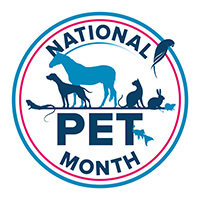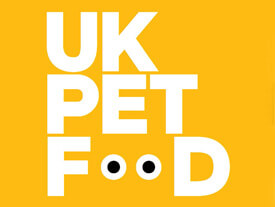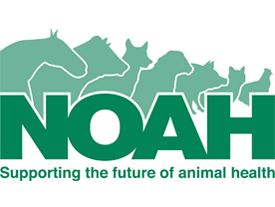Say No To Table Scraps and Yes To A Balanced Diet: Feeding Pets Healthily On A Budget
It’s not just humans that have been piling on the pounds in recent years. It seems our pets have been too. Eighty per cent of vets are seeing more obese pets, with 56% of dogs, 47% of cats, 36% of small pets like rabbits and Guinea pigs and 10% of birds seen in a veterinary practice being overweight or obese. So, as we move into Spring, what can we do to help our pet companions shed that extra weight and improve their health?
Although numerous factors come into play when considering a pet’s size and weight, top of the list is a healthy diet.
If you’re struggling to make this a priority, just think on this for a moment.
Dogs fed to lean condition from early puppyhood throughout life can live an incredible two years longer, according to findings from the Kealy Study: Richard D Kealy PhD et al, JAVMA, vol 220, 2002.
That’s another 24 months or 730 days of pet companionship and joy in your life. Who wouldn’t want that?
Read on for NPM’s tips to keep your pet in shape and feed them well on a budget.
1. Start As You Mean To Go On
The food you choose to feed your pet is one of the most important decisions you can make for their long-term health.
There is a range of pet food to suit all purses, needs and preferences so you don’t need to compromise on good nutrition.
2. Look For The Term 'Complete' On The Pet Food Label
Dogs need around 37 essential nutrients in their daily diet for healthy bodily function, and cats, around 40. Buying a ‘complete’ prepared pet food ensures a nutritionally balanced meal that meets all a pet’s needs. There are very good ‘complete’ pet foods available at all price points that cater for a pet’s life stage, lifestyle, and taste.
.jpg)
3. Don’t Compromise Health With a Homemade Diet
Table scraps and leftovers from family meals shouldn’t take the place of a specially formulated pet food, as there is a strong chance this won’t provide the right nutrients in the right proportions.
Cats, in particular, need taurine, arginine, niacin, preformed vitamin A, and specific types of essential fatty acids. If their diet is deficient in any of these nutrients, they can suffer severe health problems.
Family leftovers can also be highly calorific and may contain some ingredients that are toxic for pets such as onion, garlic, and grapes.
By feeding a ‘complete’ diet you know your pet will receive the right amount of nutrients based on their ideal weight.
4. Be Willing To Adapt - Adjust Your Pet’s Diet If and When Necessary
Every complete pet food packet has a feeding guideline showing how much food is needed per day.
Recommendations are based on your pet’s ideal weight and sometimes take into account their life stage and activity level.
As each pet has their own needs, start with the recommended amounts and adjust accordingly. This may depend on your pet’s age, neuter status, breed and lifestyle.
A pet’s nutritional needs will change as they move from puppy and kitten age to adulthood and senior years, so feed them a diet appropriate for their life stage.
5. It’s a Balancing Act So Get The Scales Out!
To ensure your pet gets the right amount of food, always follow the guidelines and weigh out their daily allowance. Then split it between mealtimes.
It’s always a good idea to give one family member the responsibility of feeding your pet. However, if you have to share the responsibility, make sure those involved know exactly how much food your pet is allowed. This avoids making the mistake of overfeeding with extra meals, treats or human scraps.
A very easy way to monitor this is by printing off a Food Diary.
6. Table Scraps Are Not a Treat
We all know that table scraps are not good for our pets. A UK Pet Food survey highlighted that 41% of owners agreed that feeding them could be to blame for pet obesity, and yet many of us still do it. Here’s why we shouldn’t.
“Table scraps, from human food, are inappropriate for pets as they can be too high in fat, salt, sugar and energy content,” says Sarah Hormozi, UK Pet Food Head of Science and Education.
“What may appear to be a small portion for a human is a large portion for a pet. For example, one chunk of cheese for a cat could have the equivalent calorie contribution of nine chunks for a human!”
7. Introduce Any Diet Change Gradually
It’s important to avoid sudden changes in your pet’s diet as this may cause a stomach upset.
If you’re switching diets, this should be done gradually over a period of 4-7 days.
Start by introducing a little of the new diet to your pet’s regular food, gradually increasing this over a few days whilst decreasing the old food. Follow the feeding guidelines as these can vary between different pet food brands.
8. Always Ask For Help
If you’re unsure what is the right diet to feed your pet, then always seek help and support from veterinary and pet professionals.
A chat with your local veterinary practice or pet store is a good starting point to ensure you are following a good weight management plan for your pet.
You can also find more helpful advice on the UK Pet Food website.
Follow these top tips and you’ll give your much loved pet the best possible chance to live a long, happy and healthy life with you.


